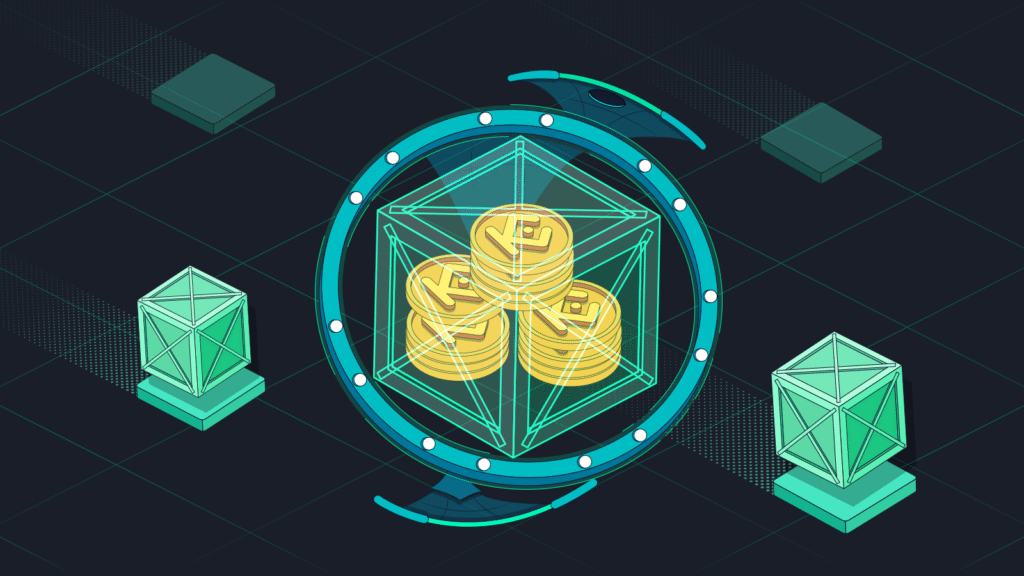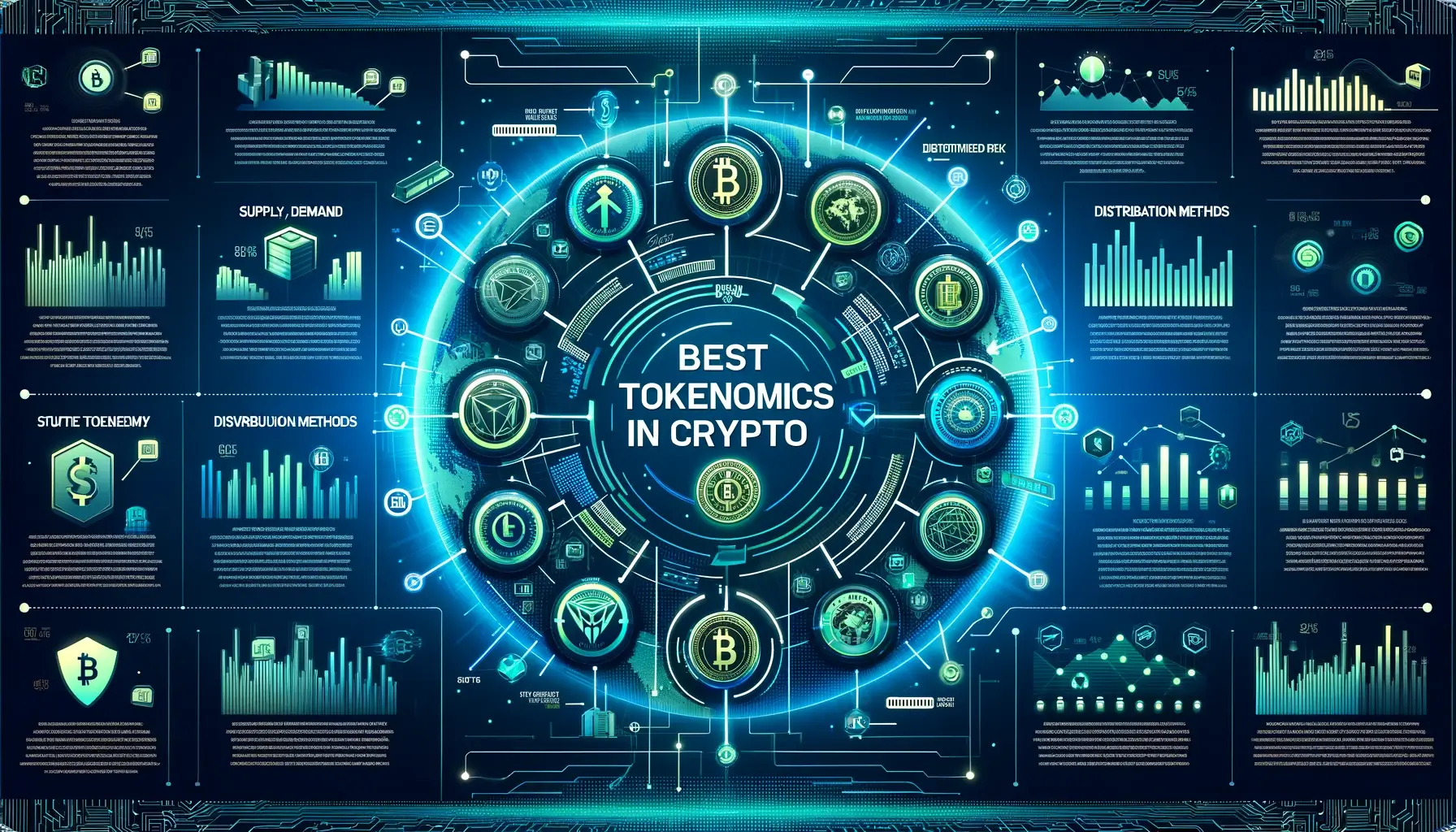What Is Tokenomics — and Why Is It Changing?
You’ve probably heard the word “tokenomics” thrown around in crypto circles. But what does it actually mean?
Tokenomics is the system behind how a token works — how it’s created, distributed, and used in a project. But in 2025, it’s not just about launching a coin and hoping for the best.
Today, innovative tokenomics means creating smarter, fairer, and more engaging systems that reward people for actually using the network. The best crypto projects now focus on long-term value, real incentives, and user-first designs.
Why Tokenomics Is a Big Deal in 2025

In simple terms — good tokenomics keeps a project alive and thriving. Bad tokenomics? It usually leads to hype, followed by a crash.
Here’s why people care about tokenomics now more than ever:
- It influences whether a token holds value or loses it
- It shapes how communities are built
- It affects who benefits — early adopters, active users, or just whales
- It creates fairness (or not) in how rewards are given
The Most Innovative Tokenomics Projects Right Now
Let’s explore some of the crypto projects that are redefining tokenomics in 2025 with smart and creative systems.
1. EigenLayer – Earn More from the ETH You Already Staked
What it does:
EigenLayer lets users re-stake their Ethereum to help secure other networks. So your staked ETH doesn’t just sit there — it does more work.
Why it’s cool:
- No need to invest more to earn more
- Helps grow new blockchains without creating new tokens
- Makes Ethereum more useful and efficient
Simple idea: You stake once, earn in multiple places. Smart, right?
2. Friend.tech – Where Social Media Meets Crypto
What it does:
Friend.tech is like Twitter + a token market. People can buy access to private chats with influencers, and that access itself becomes a token that can be traded.
Why it’s different:
- Creates real value around online attention
- Early buyers benefit as interest grows
- Mixes community with finance in a creative way
Real-world use: Fans invest early in a creator. As the creator grows, their token value increases.
3. Celestia – Powering New Blockchains with Smart Incentives
What it does:
Celestia lets people build their own blockchains, while using its network to store data. Its token, TIA, is used to pay for that service.
Why it’s innovative:
- It separates storage from security — making things faster
- Developers can build their own chains without starting from scratch
- TIA token gets more useful as more apps use Celestia
Think of it like: The AWS of blockchains — but with a token that powers it.
4. Pendle Finance – Turning Future Yield into a Tradeable Asset

What it does:
Pendle lets you split a yield-bearing token into two parts — one for the original value, and one for the future yield.
Why that’s clever:
- You can lock in profits or trade future returns
- Adds flexibility to DeFi investing
- Great for people who want more control over their crypto income
For example: Stake ETH, sell your future yield for upfront cash, and still hold your base ETH.
5. Jupiter (Solana) – Rewarding You Just for Trading
What it does:
Jupiter helps Solana users find the best trading routes for tokens. In return, it rewards users with its JUP token.
Why people love it:
- Every trade earns points (which turn into tokens)
- Helps people save money on trades
- Gives users a say in the platform’s future
Bonus: The more you use it, the more you earn. No extra work needed.
6. Blur – NFT Trading with a Twist
What it does:
Blur is an NFT marketplace that rewards people for actively trading — not just holding.
Why it’s smart:
- You earn tokens by making offers and listing NFTs
- More activity = more rewards
- Keeps the platform lively and competitive
Example: You list NFTs and place bids, and in return, get BLUR tokens — which have value on their own.
7. Notional Finance – Fixed-Rate DeFi That’s Actually Predictable
What it does:
Notional offers fixed-rate lending and borrowing, which is rare in crypto. It uses the NOTE token for staking and governance.
Why it’s useful:
- Helps long-term investors who want stable returns
- Makes DeFi more accessible for institutions
- Gives token holders a voice in decisions
Bottom line: Predictable yields + community input = a stronger financial tool.
Infographic: Key Ingredients of Innovative Tokenomics
What We’re Seeing in 2025’s Tokenomics
Some clear trends are emerging this year:
- Restaking and double rewards – Making one action work in multiple ways
- Tokenized attention – Turning social influence into a tradeable asset
- Activity-based airdrops – Earning tokens for using the platform, not just holding
- Cross-chain support – Tokens that work on more than one blockchain
- Fixed-income DeFi – Bringing traditional finance stability to crypto
Final Thoughts: What Makes a Token Model “Innovative”?
It’s not just about having a coin anymore.
The most successful projects today are building ecosystems — not just tokens.
They’re asking:
- How do we make rewards feel fair?
- How do we get people involved without needing whales?
- How do we make crypto useful — not just speculative?
Projects like EigenLayer, Friend.tech, and Pendle are showing that tokenomics is now a design challenge — not just a math problem.
Frequently Asked Questions (FAQ)
1. What is tokenomics in crypto?
Answer:
Tokenomics is short for “token economics.” It refers to how a cryptocurrency or token is designed, distributed, and used within a blockchain project. Good tokenomics helps ensure the token has value, utility, and long-term growth potential.
2. What makes tokenomics “innovative”?
Answer:
Innovative tokenomics includes creative ways to:
- Reward users for real participation
- Prevent early whales from controlling supply
- Encourage long-term holding or ecosystem use
- Combine financial tools like yield, staking, or governance into one model
Projects like EigenLayer or Pendle show how this is done smartly in 2025.
3. Why should I care about tokenomics before investing?
Answer:
Tokenomics tells you how a token gains value, how it’s distributed, and how fair the system is. If tokenomics is poorly designed, the project might fail — no matter how good the idea sounds.
4. Which projects have the best tokenomics in 2025?
Answer:
Some of the most talked-about projects this year include:
- EigenLayer for re-staking ETH
- Friend.tech for social tokenization
- Celestia for modular blockchain infrastructure
- Pendle Finance for yield trading
- Blur for NFT activity-based rewards
5. What’s restaking and why is it a big deal?

Answer:
Restaking lets you use your already-staked tokens (like ETH) to secure additional protocols — giving you more rewards without locking up extra funds. It boosts capital efficiency, especially in platforms like EigenLayer.
6. How is Friend.tech different from typical crypto platforms?
Answer:
Friend.tech merges social media with crypto. It allows you to buy “shares” of someone’s social presence. As more people buy in, the value of those shares increases. It turns attention and community into tradable assets.
7. What does Celestia’s token do?
Answer:
Celestia’s TIA token is used to pay for data availability on its modular blockchain platform. It supports apps and custom chains that use Celestia as their base layer.
8. Can I earn passive income with these projects?
Answer:
Yes. Many of these projects, like Pendle, EigenLayer, and Notional, allow users to earn passive income through yield farming, staking, or lending with fixed interest.
9. What is Pendle and how does it work?
Answer:
Pendle splits your yield-bearing token into two parts:
- Principal Token (you still own the base asset)
- Yield Token (you can trade your future interest today)
It lets you sell or lock in yield strategies with more flexibility.
10. Are these tokens only for advanced users?
Answer:
Not necessarily. While some platforms are advanced (like JAX or Pendle), others like Friend.tech and Blur are easy for beginners to explore. Start small, read guides, and choose platforms based on your risk level.
